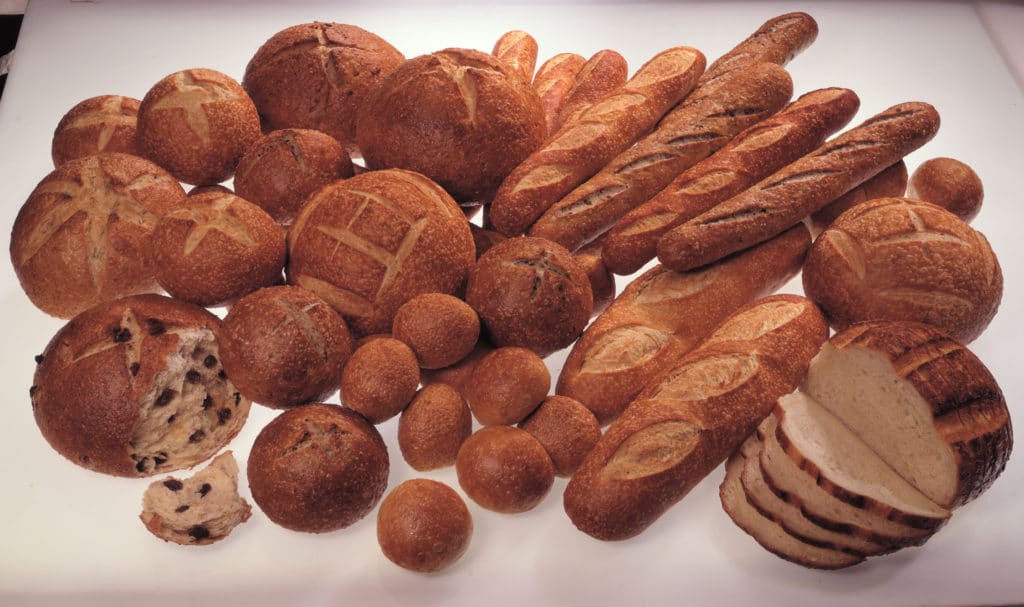
Some folks adore that sourdough tang, and I’m one of them, but I ceded to my husband’s taste with this loaf. He loved it, although sourdough isn’t his favorite. A little baking soda in the dough sweetened some of the sourdough tang, that was the secret. He, and the little one (who’s really a big teenager now) and I ate some sliced while it was still barely warm, each in our own ways. The little one spread pesto on her slices and sandwiched feta cheese and tomatoes in between. I liked it with chicken salad and lettuce, and a slice of tomato snitched away from her. Husband opened a jar of peanut butter and spread it on his sourdough, bless him. He made happy eating noises … I think I converted him to sourdough.
Plain white sourdough bread
PrintIngredients
- ½ cup water
- ½ cup newly refreshed sourdough starter
- 3 cups white flour
- 3 tbsp oil
- 1 tbsp sugar
For the following day
- 2 ½ cups flour
- 1 tbsp salt
- 1 tsp baking soda
Instructions
- Put the water, starter, 3 cups flour, oil and sugar in a large bowl. Mix well.
- Cover with plastic wrap and leave to ferment in a cool place overnight.
- Next morning, deflate the sponge, and to it add 2 cups of flour, the salt and the baking soda. If the dough seems too loose to handle, add the last 1/2 cup of flour, cautiously. For a loaf that’s lighter than the usual sourdough, keep the dough sticky. Oil your hands to knead.
- Knead 10 minutes. Cover the dough again and leave it in a warm place to rise. This will take 2-3 hours.
- Deflate the dough and shape your loaf. Cover the loaf and let it rise somewhere warm until it’s light. It may not rise to double in size, but you should be able to see gas blisters under the surface skin of the dough. This third rising takes anywhere from 1 hour to 3 hours, depending on how warm the room is.
- Slash the top of the loaf to avoid “flying crown.” This is especially important if the loaf is to be free-form, not baked in a pan. Give it about 5 minutes to recover, then bake in a preheated 350° F (180° C) oven for 1/2 hour.
- When the top has a firm, golden crust, test the loaf with a toothpick. If it seems underdone, give it another 5 minutes and test again. If you're baking it free-form, it will probably be done after 1/2 hour; it might take another 5 minutes or so if baked in a pan.
Originally Published Oct 11, 2021 11:54AM EDT
